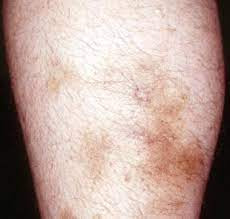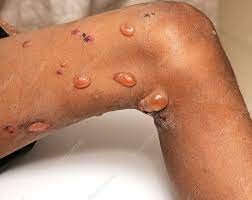Definition
Henoch-Schönlein Purpura (HSP), or IgA vasculitis, is a type of inflammation that affects small blood vessels in the skin, digestive tract, and kidneys. It is characterized by the accumulation of immunoglobulin A (IgA) antibodies in these blood vessels, leading to inflammation and subsequent blood leakage. This often results in red or purple spots or stains on the skin.
HSP is categorized as one form of vasculitis, a group of diseases characterized by inflammation and swelling of blood vessels. Each type of vasculitis typically involves specific characteristics of the affected blood vessels. In the case of HSP, it primarily affects small blood vessels in the skin, digestive tract, and kidneys.
HSP is more commonly diagnosed in children, with approximately 10 cases per 100,000 children per year. It is important to note that HSP is not transmitted between individuals.
In addition to skin involvement, some patients with HSP may experience issues with the digestive tract, joints, and kidneys. This occurs due to the inflammation of blood vessels in these areas. In rare instances, other systems such as the respiratory and nervous systems, as well as other organs, may also be affected by HSP.
Causes
The exact cause of Henoch-Schönlein Purpura is still not known. However, several studies suggest that inflammation of blood vessels in Henoch-Schönlein Purpura is caused by an abnormal immune system response to infections. IgA Vasculitis is a rare immune response to infections caused by bacteria or viruses. This abnormal immune response can cause inflammation of blood vessels, leading to bleeding and the appearance of red or purplish rashes (Purpura) on the skin.
Infections associated with Henoch-Schönlein Purpura involve various viruses, such as Coxsackievirus, hepatitis A, hepatitis B, parvovirus B19, Varicella zoster, and adenovirus, as well as bacterial infections like Mycoplasma and Streptococcus. Additionally, Henoch-Schönlein Purpura can also be triggered by other factors such as vaccination, insect bites, certain drugs, and exposure to cold temperatures.
Risk factor
Henoch-Schönlein Purpura (HSP) can indeed affect individuals of any age, but it is most commonly observed in children, particularly between the ages of 2 and 11 years old. Additionally, it is noted that HSP occurs more frequently in boys than in girls. However, in adults, the symptoms of HSP often tend to be more severe.
Symptoms
The four main characteristic symptoms of Henoch-Schönlein Purpura include:
- Redness (purpura): the appearance of red or purplish spots resembling bruises on the buttocks, legs, and thighs. These red spots may also appear on the arms, face, and waist and can worsen in areas under pressure, such as the feet and waist
- Swelling and joint pain (arthritis): Patients with Henoch-Schönlein Purpura typically experience pain and swelling around the joints, especially in the knees and wrists. Redness that lasts for one or two weeks can occasionally accompany joint pain. These symptoms may diminish as the disease improves and usually do not progress
- Gastrointestinal symptoms: Children with Henoch-Schönlein Purpura may have abdominal pain, nausea, vomiting, and bloody stools. These symptoms may sometimes precede the appearance of red spots. Additionally, loss of appetite, headaches, and fatigue are other possible symptoms of Henoch-Schönlein Purpura
- Kidney involvement: Henoch-Schönlein Purpura can also affect the kidneys. In some cases, blood or protein may be present in the urine during a urinalysis test. Typically, this can resolve when the disease improves, but in some patients, kidney disturbances may become chronic
Diagnosis
The diagnosis of Henoch-Schönlein Purpura relies on a combination of examinations, including physical examination to identify characteristic skin lesions (purpura) and assess tenderness in the joints, urinalysis to detect microscopic blood indicating kidney involvement, fecal examination to identify microscopic blood indicating gastrointestinal involvement, other laboratory tests to rule out similar diseases, and skin or kidney biopsy to reveal the accumulation of immunoglobulin A (IgA), supporting the diagnosis of HSP.
Management
Treatment for Henoch-Schönlein Purpura, particularly in mild cases, may resolve spontaneously, but it carries the risk of serious complications affecting the kidneys and gastrointestinal tract. Typically, symptoms of Henoch-Schönlein Purpura tend to subside and vanish within 6-8 weeks without intervention. Consequently, doctors typically advise patients to prioritize rest, maintain adequate hydration, and utilize pain relief medication as necessary.
The treatment approach for Henoch-Schönlein Purpura focuses on addressing areas significantly impacting mobility. Joint pain can be alleviated or managed with painkillers or other anti-inflammatory medications. The specific medication prescribed depends on the severity of the condition, the organs affected, and whether the patient requires additional immunosuppressive therapy.
Furthermore, healthcare providers will recommend regular check-ups to assess kidney function and monitor the patient's overall condition. These evaluations are typically scheduled every 6-12 months and may be discontinued if no abnormalities are detected.
Complications
In some cases, complications from Henoch Scholein Purpura are rare but can cause complications such as disorders in the kidneys (when severe enough, patients may need hospitalization), bleeding in the digestive tract, inflammation of the tubes and the folded intestines. Other possible but rare complications such as seizures, bleeding in the lungs and heart attacks.
Prevention
Preventing Henoch-Schönlein Purpura is challenging because of the unknown causes. One possible approach is to reduce the risk factors for Henoch-Schönlein by preventing infections, both viral and bacterial. Additionally, implementing a clean and healthy lifestyle supports the prevention of Henoch-Schönlein.
When to see a doctor?
Contact your doctor if you experience symptoms of Henoch-Schönlein Purpura or severe symptoms in your digestive tract. If your child experiences redness related to this condition, contact a doctor for appropriate treatment. If you experience a recurrence of Henoch-Schönlein Purpura, consult with your doctor for regular check-ups even after recovery. The doctor will also conduct further examinations if your symptoms reappear.
Looking for more information about other diseases? Click here!
- dr. Lukita Tarigan
Mayo Foundation for Medical Education and Research. (n.d.). Henoch-Schonlein Purpura. Mayo Clinic. https://www.mayoclinic.org/diseases-conditions/henoch-schonlein-purpura/symptoms-causes/syc-20354040
National Center for Biotechnology Information. (n.d.). https://www.ncbi.nlm.nih.gov/books/NBK537252/
professional, C. C. medical. (n.d.). Iga vasculitis (Henoch-Schönlein purpura). Cleveland Clinic. https://my.clevelandclinic.org/health/diseases/14893-iga-vasculitis-henoch-schonlein-purpura
Rajendra Bhimma, Mbc. (n.d.). Henoch-Schonlein purpura (IGA vasculitis). Practice Essentials, Background, Pathophysiology. https://emedicine.medscape.com/article/984105-overview
U.S. Department of Health and Human Services. (n.d.). Iga vasculitis - niddk. National Institute of Diabetes and Digestive and Kidney Diseases. https://www.niddk.nih.gov/health-information/kidney-disease/iga-vasculitis
Villa-Forte, A. (n.d.). Immunoglobulin A–associated vasculitis (IgAV) - musculoskeletal and connective tissue disorders. MSD Manual Professional Edition. https://www.msdmanuals.com/professional/musculoskeletal-and-connective-tissue-disorders/vasculitis/immunoglobulin-a%E2%80%93associated-vasculitis-igav











